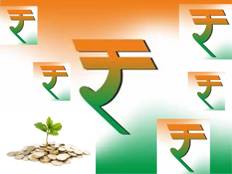How Much is Your Patent Worth?
25 December 2012Introduction
How much is your patent worth? Ask this to someone who owns a patent.
The most likely answer to this would be, 'It depends!' with a shrug. Clearly such a question
is uncomfortable with no clear and definitive answer.
Many people who own patents or are named as inventors in patents they developed
do not bother about the true value of their possession. They are quite happy and content
with the recognition they get as being inventors or patent owner.
Value of Patent for Investor
But for an investor who has put in a substantial amount of money in the development
of an invention this is certainly a pertinent question and he is constantly seeking the best possible answer.
The value of patent for him is directly linked to the returns he can get on his investments he made in developing
the invention. The returns, however, depend on several factors such as what type of industry the invention
falls into, for example, a new drug patent will be valued differently than a new cost-saving process for manufacture
of a key automotive component. The market structure and demand for both would be quite different and hence the
expected returns from the two.
Valuation Techniques
Economists have developed a number of valuation techniques based on different approaches
for estimating value of patents or for that matter any intellectual property or assets that can be used
across all industries. The underlying difficulties with nearly all these methods is essentially
acquiring relevant data or estimates on the basis of which these methods are supposed to work.
Nonetheless, these methods are frequently used with certain presumptions and due caution.
Valuation of an intellectual property on a formal basis for reasons of trading and
merger or acquisition of business is a fairly involved process. Valuers try to assess
the value based on future income by the use of the property in given circumstances.
Thus, the value of an intellectual property cannot be stated out of context; it is more
appropriately expressed in terms of particular place, time, and the circumstances and still
remains at best a guesstimate and not a precise or exact value.
Different valuation methods provide different perspectives on an asset's value and in practice
several different methods are employed to determine the final value and often settled through
negotiations between the parties involved.
The two most common methods of IP evaluation are:
- Income based method (also called discounted cash flow or 'DCF' method)
- Market based method
The Income Approach
The income approach or DCF method tries to estimate how much income the given patent will
generate over its life (usually 20 years). There are many things which go into this calculation
such as market size, anticipated growth rate, competition in each successive year of its presumed life.
The calculated net income takes into account the costs for marketing, training, advertisement, brand promotion etc.
Similarly anticipated growth rate would take into account, growing brand value, risks, taxes etc.
Usually, a spreadsheet of projected income for all successive years is made and a net present value of
all future incomes are worked out on certain assumptions. This may look somewhat daunting but after a few
trials, one can get a hang of this method and a number of different values can be quickly worked out on
different assumptions. This method is also useful when someone is keen to license his patent to someone else.
The fact that someone is keen to obtain license for your patent is a sure sign that it has got some value.
The value of your patent for the licensee would again be dependent on how much he can make out from your license.
The same technique can be applied to work out projected future income for the licensee from your patent and that
can be the basis for the price of upfront fee and the yearly royalty you can demand.
Market Approach
The Market-based method essentially looks at comparable market valuations just as it is commonly employed in
property market after knowing a going rate for an identical or similar property. Assets that are comparable to
those in question are identified, and the valuation is based on their past licensing revenue. Thus, finding
comparable transactions is the key to the market valuation method. This is easier said than done; no two assets
are the same and the markets in which they could be traded may vary significantly, thus making comparisons quite difficult.
While trying to find comparables, it is important to see the nature of previous deals,
such as being exclusive or non-exclusive, with rights being granted for a certain region,
country or world-wide. It is extremely unlikely that one would find an exact match for the
patent or the proposed deal but it is not uncommon to get close enough to put a rough value on your patent.
Where do you find such comparative information? There are specialized market intelligence consultants
who keep an eye on such deals and give you the information for a hefty fee.
But, if you need to do it yourself from scratch, you could begin your search at the internet
with keywords of 'names of well known companies in the given industrial sector' + 'license' or 'royalty'.
You can slowly build a database of specific deals of patent licensing. You could also gather information
from company press releases. But this would certainly be a slow process.
Conclusion
The beauty of all patent valuation methods is that irrespective of the fact that your valuation
is perfect or not but you would immediately be driven in the context of market and the demand for your patent.
This should help you to get a good insight of the market in which you are operating.
Further Reading
References cited in the above article
